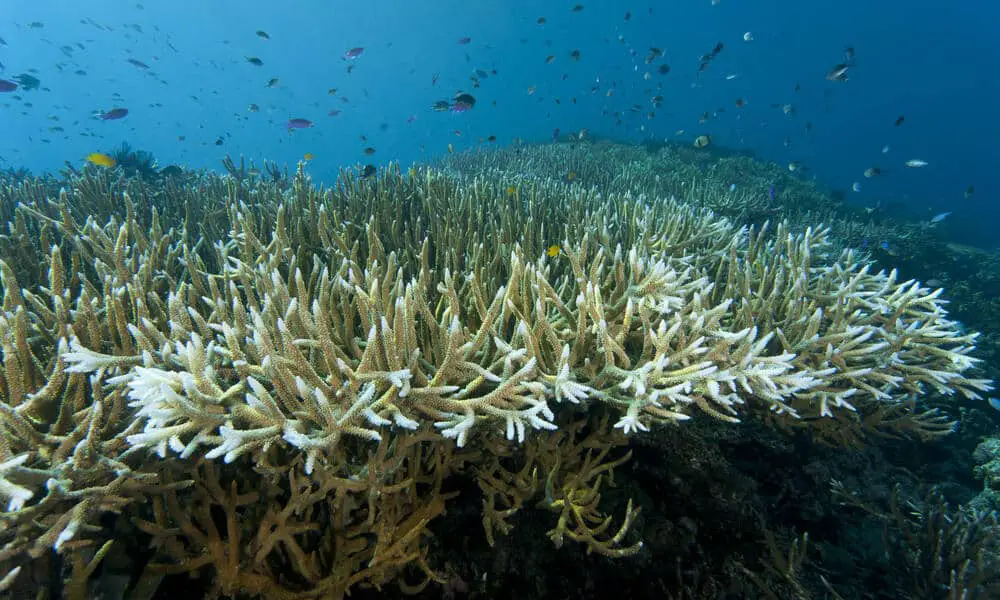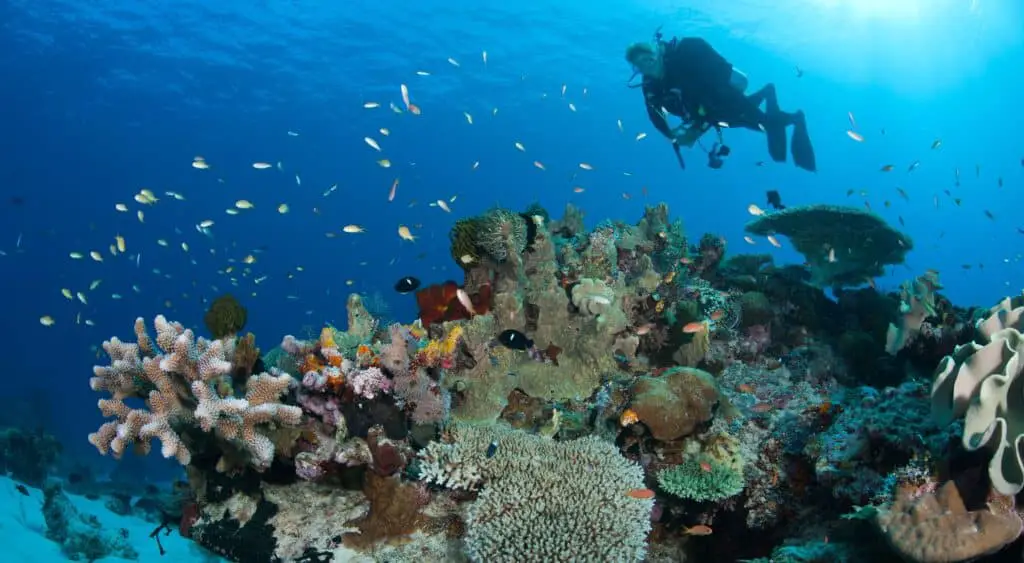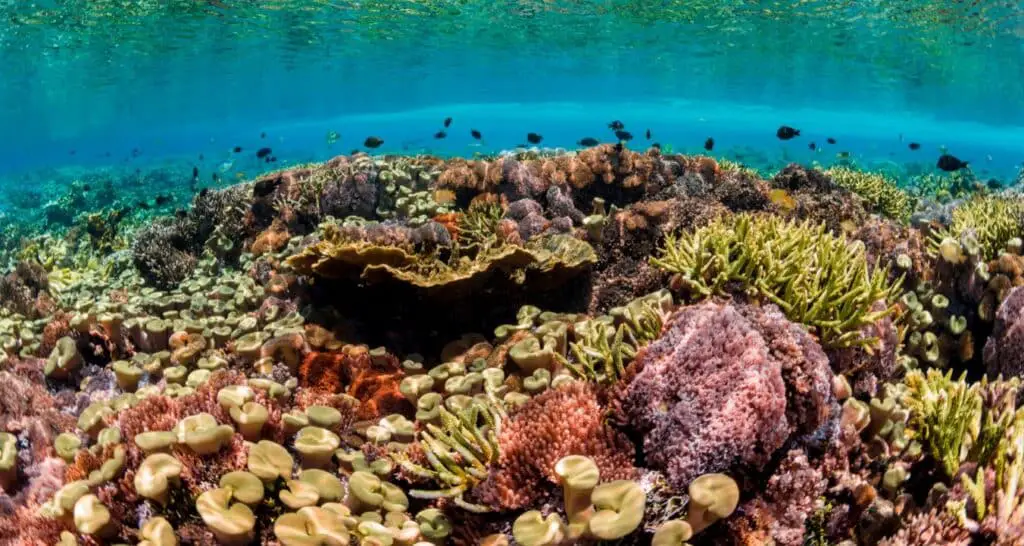How To Prevent Coral Bleaching

Introduction
How To Prevent Coral Bleaching: Coral bleaching has emerged as a dire threat to the world’s oceans and marine biodiversity. Over the past few decades, the alarming frequency and severity of coral bleaching events have intensified, primarily due to rising sea temperatures driven by climate change. This phenomenon not only jeopardizes the stunning beauty of coral reefs but also imperils the countless species that rely on these vibrant ecosystems for their survival.
In this comprehensive guide, we delve into the critical topic of how to prevent coral bleaching. It is a call to action and a testament to the urgent need for conservation efforts. We will explore a range of strategies and practices that individuals, communities, and governments can adopt to mitigate the devastating effects of coral bleaching and help coral reefs regain their vitality.
From reducing carbon emissions and promoting sustainable fishing practices to establishing marine protected areas and implementing coral restoration initiatives, this guide will provide insights and actionable steps to protect these underwater wonders. Together, we can make a positive impact and ensure the long-term resilience of coral reefs, safeguarding not only the marine life they support but also the global ecosystem they are an integral part of.

What is being done to prevent coral bleaching?
EPA protects coral reefs by implementing Clean Water Act programs that protect water quality in watersheds and coastal zones of coral reef areas. EPA also supports efforts to monitor and assess the condition of U.S. coral reefs, and conducts research into the causes of coral reef deterioration.
Coral bleaching, a devastating consequence of climate change and human activities, threatens the world’s coral reefs, ecosystems that are vital for marine biodiversity and coastal communities. Several initiatives and strategies are being implemented globally to prevent coral bleaching and mitigate its impacts.
- Reducing Greenhouse Gas Emissions: One of the primary causes of coral bleaching is the rise in sea temperatures due to global warming. Efforts to reduce greenhouse gas emissions through international agreements like the Paris Agreement are crucial in addressing this issue.
- Marine Protected Areas: Establishing and effectively managing marine protected areas (MPAs) helps safeguard coral reefs. These areas limit destructive fishing practices and provide a safe haven for marine life.
- Coral Restoration: Scientists and conservationists are actively engaged in coral restoration projects. Techniques such as coral nurseries and outplanting are used to grow and transplant resilient coral species onto damaged reefs.
- Water Quality Management: Reducing land-based pollution, sewage runoff, and agricultural runoff can improve water quality around coral reefs, making them more resilient to stressors.
- Sustainable Fishing Practices: Implementing sustainable fishing practices can reduce the impact of overfishing and destructive fishing methods on coral reef ecosystems.
While these efforts are crucial, the urgency of addressing climate change remains paramount, as it underpins many of the other solutions. Preventing coral bleaching ultimately requires global cooperation and sustained commitment to reducing carbon emissions and protecting these fragile ecosystems.
How do you protect corals from coral bleaching?
8 Ways You Can Help Save Coral Reefs
- Dive responsibly when you visit coral reefs. Avoid touching reefs or anchoring your boat on the reef.
- Wear reef-friendly sunscreen.
- Eat sustainable seafood.
- Make your lawn care green.
- Volunteer!
- Leave no trace.
- Conserve water.
- Spread the word!
Here’s some more information on how to protect corals from coral bleaching:
- Coral monitoring: Regular monitoring of coral health and environmental conditions is essential.
- Heat-tolerant coral species: Researchers are working on identifying and cultivating coral species that are more heat-resistant.
- Local community involvement: Engaging local communities in coral conservation efforts can be highly effective.
- Tourism management: Tourism can put significant pressure on coral reefs. Implementing responsible tourism practices.
- Legislation and policy: Governments and international organizations can enact and enforce laws and policies that protect coral reefs.
- International collaboration: Coral reefs transcend national boundaries. Collaborative efforts between countries, organizations, and researchers can lead to a more comprehensive and effective approach to coral protection.
- Coral restoration technology: Innovative technologies, such as 3D printing of coral structures and the use of specialized materials, are being explored to aid in coral restoration efforts.
- Ocean cooling strategies: Research into methods like cloud brightening and ocean shading aims to temporarily cool waters around reefs during extreme heat events, providing short-term relief for corals.
What solution is there to the coral reefs dying?
Scientists say creating marine refuges, where fishing, mining, and recreating are off limits, make the reefs healthier, and so more resilient. An estimated 4,000 fish species, and some 25 percent of marine life, depend on coral reefs at some point in their existence.
The decline of coral reefs, often referred to as the “rainforests of the sea,” is a global environmental crisis with severe consequences for marine biodiversity and coastal communities. Several solutions are being pursued to address the issue of coral reefs dying:
- Mitigating Climate Change: Tackling the root cause of coral reef degradation, which is primarily driven by rising sea temperatures and ocean acidification due to greenhouse gas emissions, is paramount. Global efforts to reduce emissions and transition to renewable energy sources are essential.
- Marine Protected Areas (MPAs): Expanding and effectively managing MPAs can provide sanctuaries for coral reefs, helping to protect them from destructive human activities like overfishing and tourism-related damage.
- Coral Restoration: Scientists are developing techniques for coral restoration, including coral nurseries and outplanting, to rehabilitate damaged reefs by transplanting resilient coral species onto them.
- Sustainable Fishing: Implementing sustainable fishing practices can reduce the stress on coral ecosystems caused by overfishing and destructive fishing methods.
- Reducing Pollution: Efforts to minimize land-based pollution, sewage runoff, and agricultural runoff can improve water quality around coral reefs, making them more resilient to stressors.
- Public Awareness: Educating the public about the importance of coral reefs and the threats they face can generate support for conservation efforts and promote responsible tourism.
Addressing coral reef decline requires a coordinated global effort that combines these strategies while emphasizing the urgent need to combat climate change. By taking comprehensive action, we can hope to reverse the alarming trend of coral reefs dying and ensure the survival of these critical marine ecosystems.
What are five causes of coral bleaching?
Pollution, overfishing, destructive fishing practices using dynamite or cyanide, collecting live corals for the aquarium market, mining coral for building materials, and a warming climate are some of the many ways that people damage reefs all around the world every day.
Coral bleaching is a distressing phenomenon affecting coral reefs worldwide, caused primarily by environmental stressors. Five major causes of coral bleaching include:
- Elevated Sea Temperatures: High sea temperatures, often linked to global warming, are a primary trigger of coral bleaching. Corals have a symbiotic relationship with photosynthetic algae called zooxanthellae, which provide them with essential nutrients. When waters become too warm, corals expel these algae, resulting in the loss of their vibrant colors and vital energy source.
- Ocean Acidification: Increased carbon dioxide (CO2) levels in the atmosphere lead to ocean acidification, which can weaken coral skeletons and make them more vulnerable to stressors like temperature fluctuations.
- Pollution: Runoff from land-based sources, including agriculture and urban areas, introduces pollutants such as sediment, pesticides, and nutrients into coastal waters. These pollutants can disrupt the delicate balance of coral ecosystems and exacerbate stress.
- Overfishing: Excessive fishing, particularly of herbivorous species that help control algae growth on reefs, can disrupt the ecological balance within coral ecosystems. Algae overgrowth can shade corals and further stress them.
- Natural Events: Natural phenomena like hurricanes, El Niño, and La Niña events can cause physical damage to coral reefs and lead to temperature anomalies that trigger bleaching.
Understanding these causes is crucial for effective coral reef conservation. Mitigating coral bleaching requires global efforts to reduce carbon emissions, protect coral habitats, and promote sustainable practices in fisheries and coastal development. By addressing these underlying factors, we can work towards preserving these invaluable ecosystems and the countless species that rely on them.
What are the six causes of coral bleaching?
Although some are more common than others, coral bleaching can have a number of causes.
- Temperature.
- Solar Irradiance.
- Subaerial Exposure.
- Sedimentation.
- Fresh Water Dilution.
- Inorganic Nutrients.
- Xenobiotics.
- Epizootics.
Here’s some additional information on how to protect corals from coral bleaching:
- Coral bleaching monitoring: Regular monitoring of coral health and temperature fluctuations is essential. Advanced technology, like satellite imagery and underwater sensors.
- Responsible tourism: Encouraging responsible diving and snorkeling practices, such as not touching or standing on coral reefs, can minimize physical damage to corals.
- Coral-friendly sunscreen: Many common sunscreens contain harmful chemicals that can harm coral reefs when washed off into the ocean. Using reef-safe sunscreens that do not contain oxybenzone and octinoxate can help protect coral health.
- Coral disease management: Diseases can exacerbate coral bleaching effects. Developing strategies to identify, treat, and prevent coral diseases is crucial in maintaining coral resilience.
- Community involvement: Engaging local communities living near coral reefs is vital. Empowering these communities to participate in coral conservation efforts and providing alternative livelihoods can reduce unsustainable practices like overfishing and destructive fishing methods.
- Scientific research and innovation: Continual research into coral biology, genetics, and resilience can help identify and develop new strategies for protecting corals from bleaching.
Can coral recover from bleaching?
“We found that the time needed for coral reefs to recover from bleaching is at least 9-12 years – if there is no new disturbance in the meantime, such as a cyclone or re-bleaching,” he said. Dr Wolanski said the conditions that promoted recovery in different species of coral varied across the species.
Coral reefs have the potential to recover from bleaching events, but several factors influence the extent and speed of their recovery. Coral recovery depends on a combination of natural resilience, environmental conditions, and human intervention.
- Natural Resilience: Some corals possess greater resilience to bleaching events than others. Certain species have adapted to thrive in warmer waters and can recover more quickly. These resilient corals can help kickstart the recovery process.
- Environmental Conditions: Favorable environmental conditions are crucial for coral recovery. Reduced stress factors, such as lower sea temperatures and improved water quality, provide corals with the opportunity to regain their health and symbiotic algae (zooxanthellae).
- Time: Recovery is a slow process, and it can take several years to decades for coral reefs to fully recover from bleaching events. Corals grow at a relatively slow pace, so regaining their former size and complexity takes time.
- Human Intervention: Human efforts can aid in coral recovery. Coral restoration initiatives involve techniques like coral gardening, where fragments of healthy corals are cultivated and transplanted onto damaged reefs. These efforts can accelerate the recovery process.
While coral reefs can recover from bleaching, the rate and success of recovery depend on various factors, including the resilience of the corals, environmental conditions, and human intervention. Urgent action to mitigate climate change and protect these fragile ecosystems is paramount to ensure their long-term survival and recovery potential.
Can coral heal from bleaching?
Warmer waters can trigger a coral bleaching where the coral turns white as it expels the symbiotic food-producing algae living in its tissues. Prolonged bleaching events often cause corals to die from starvation, but they can recover if they reclaim their food source within a few weeks.
Coral bleaching is a critical issue threatening the world’s coral reefs due to rising sea temperatures and environmental stressors. When corals bleach, they expel the symbiotic algae living in their tissues, which provide them with essential nutrients and their vibrant colors. This process leaves the corals pale and weakened, making them more susceptible to disease and death.
Can coral heal from bleaching? The answer is complex. In some cases, corals can recover if the stressors causing the bleaching are temporary and mild. If conditions return to normal relatively quickly, corals can reestablish their symbiotic relationship with algae and regain their health. However, severe or prolonged bleaching events can have devastating and long-lasting effects.
While some corals can recover from bleaching under favorable conditions, the increasing frequency and severity of bleaching events pose a significant threat to coral reefs worldwide. Urgent and sustained conservation efforts are essential to safeguard these invaluable ecosystems for future generations.
What technology is used to stop coral bleaching?
To help preserve and restore coral, scientists are using an innovative technology called biorock. Biorock is a piece of technology that has a low-voltage direct current which is run through steel. This electricity can then interact with minerals in the seawater and cause solid limestone to grow on the structure.
Preventing and mitigating coral bleaching is a pressing concern in the face of climate change and environmental stressors. Various technologies and strategies are being employed to combat coral bleaching and preserve these invaluable marine ecosystems.
Coral Restoration: One of the most direct approaches is coral restoration, which involves collecting coral fragments, growing them in nurseries, and then transplanting them onto damaged reefs. This technique helps increase coral resilience and can accelerate recovery.
Artificial Reefs: Creating artificial reefs using materials like concrete structures or sunken ships provides a substrate for new coral growth, enhancing biodiversity and resilience in affected areas.
Cool Water Delivery: Some researchers are exploring the use of cool water delivery systems to reduce local water temperatures around coral reefs during bleaching events. These systems can involve pumping cooler water from deeper depths to provide temporary relief to corals.
Genetic Modification: Scientists are researching ways to breed genetically modified corals that are more resilient to rising sea temperatures and other stressors. These “super corals” may have enhanced heat tolerance and resistance to disease.
Algae Management: Reducing nutrient pollution and promoting healthy algae populations can help corals recover from bleaching, as they rely on symbiotic algae for essential nutrients.
While these technologies show promise, they are not a panacea. Combating coral bleaching requires a multifaceted approach that includes conservation efforts, policy changes, and global cooperation to address the root causes of climate change and protect these vital marine ecosystems.

Conclusion
The preservation of coral reefs through the prevention of coral bleaching is an urgent and collective responsibility. Coral reefs are not only breathtaking ecosystems teeming with biodiversity, but they also provide invaluable services to our planet, from protecting coastlines to supporting fisheries and tourism. To prevent coral bleaching, we must adopt a multifaceted approach.
First and foremost, reducing greenhouse gas emissions is paramount. Addressing climate change through policies and practices that curtail carbon emissions is vital to mitigate the rising sea temperatures responsible for coral bleaching events. This global effort requires international cooperation and the commitment of governments, industries, and individuals alike.
The prevention of coral bleaching demands a holistic approach that combines global climate action with local conservation measures. If we fail to act decisively, we risk losing these irreplaceable ecosystems, with dire consequences for both marine life and human societies. It is our duty to safeguard coral reefs for current and future generations by taking immediate and sustained action to prevent coral bleaching.



